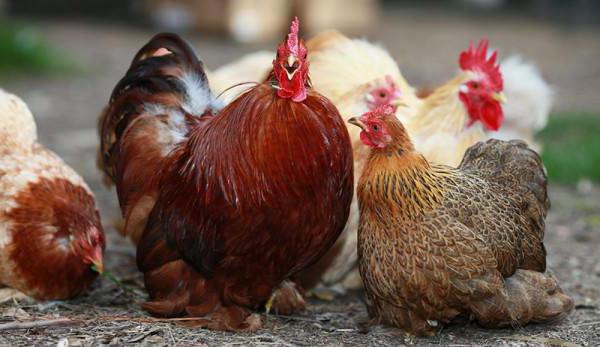Caring for chickens is a laborious process that requires sufficient knowledge. Birds, like humans, are susceptible to various diseases, and this can be caused by both hypothermia and excessive heat. The temperature of the chicken body directly depends on how warm or cold it is on the street and indoors. The norm should be approximately 41 ° C. Both excessive cold and unbearable heat cause the malaise of birds and lead to various diseases.
Hypothermia in chickens
During significant colds, the body is not able to retain heat, and therefore the body temperature of chickens decreases, which can lead to various diseases. Hypothermia is of three types:
- weak hypothermia, at which the temperature of the bird drops to 35 ° C;
- average subcooling - decreases by another 10 ° C and is already 25 ° C;
- severe degree of cooling, in which the body is cooled to 15 about C.
Not only chickens can suffer from hypothermia. Hypothermia harms all types of poultry, but chicks are most susceptible to it, since there is practically no thermoregulation in their organisms. As a result, the death of birds is observed, but even if they manage to survive, it is extremely difficult to recover, they are ill for a very long time.
In young individuals, hypothermia occurs due to the inability to maintain a stable body temperature within normal limits. Therefore, the first month of their life, chickens need additional heating, since when a deviation from the proper temperature regime occurs, the brood dies very soon. Also, do not let fluff get wet in chickens.
Lowering the body temperature of chickens occurs not only due to cold weather, but also due to excess moisture in the chicken coop, due to drafts. This also happens due to the walking of birds during the dew, especially if it is plentiful. Adult hens are not as susceptible to hypothermia as young individuals, but the combination of cold and high humidity can certainly lead to hypothermia.
Symptoms and treatment of hypothermia in chickens
First you need to diagnose hypothermia in the bird: it starts to tremble, the skin and mucous membranes become noticeably cooler, and the chicken itself is always looking for a place where it can warm up. The appetite disappears, diarrhea can be observed. The bird becomes lethargic and weak, drowsiness overcomes it, and discharge from the nasal passages may appear.
Treatment of hens with hypothermia may vary depending on its severity, but all measures should consist in intensive warming of the bird, namely: placing it in a warm and dry room, plenty of warm drink.
To prevent hypothermia in chickens, it is possible to lubricate her skin with fat, and it is also important to take care of warmth and dryness in the place of their keeping.
The effect of high temperatures on the condition of chickens
Heat stress, as well as hypothermia, leads to extremely negative consequences for the health and life of chickens. So, even at an air temperature of 32 ° C, the death of poultry begins. A feature of chickens is the absence of sweat glands, which greatly complicates their thermoregulation. They give off excess heat thanks to areas of the body without feathers, which are extremely few. When the air temperature reaches the body temperature of the bird, it becomes impossible to give off excess heat through the skin and it can get rid of heat only through the beak. She is saved by frequent breathing, which is why she significantly loses weight, and if this procedure does not bring results, the chicken dies.
High temperatures are extremely difficult for chickens to tolerate, they refuse to eat, spread their lowered wings, trying to find coolness near the ground. They have a stunted growth, the quality of the eggs is significantly reduced, the size is reduced, and the shell becomes very thin.
Helping chickens at high temperatures
First of all, it is necessary to organize airflow in the chicken coop, which will significantly reduce the temperature of the bodies in individuals. The method of evaporative cooling is also effective, in which the house is equipped with a special cooling system. At the same time, air from the street passes through wet paper and reaches a room of 10 ° C below. It is imperative that the birds have enough water, since at high air temperatures its consumption increases up to eight times. Feeding is best done in the early morning and late evening hours, when the bird is least affected by heat, and the caloric content of the feed needs to be increased. Electrolyte can be added to drinking water to make up for the loss of beneficial trace elements in the chicken body.

The negative effects of both heat and cold on the birds can be reduced if ailments are diagnosed in a timely manner. To find out what the chicken’s body temperature is, you can measure it with a thermometer rectally. The conditions of detention should be comfortable and optimal in order for the livestock to be stable.